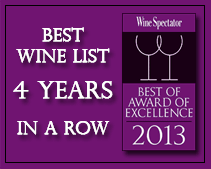Wine Production in Chile
Date: July 29, 2011
Philippines Wine Shop Clark Wine Center is pleased to share with you articles, news and information about wine, wine events, wine tasting and other topics related to wine and the appreciation of wine.
Chile underwent a rapid viticultural transformation in the 1990s. There was a large-scale investment from overseas producers that helped this transformation. After a shaky start, when the main concern was to rip out the old “rauli” (mature beech barrels) and replace them with vast stainless steel equipment, people in the wine industry paused to take stock of the situation. They soon realized that to produce outstanding, world-competing wines, more was required. The answer lay in improving the actual quality of the fruit coming into the wineries. Producers needed, literally, to return to their roots. Decades of neglect had left badly tended vines. Concepts, such as vineyard mapping, canopy management and controlled irrigation, were rapidly put into practice. Furthermore, up until recent times, Chilean wine makers had remained firmly entrenched in following traditional French methods of wine production. In the 1990s, however, they started to question and experiment, and from that moment onward, Chile’s wine industry blossomed.
Main Red Grape Varieties
Chile’s thriving wine industry was initially built upon the Cabernet Sauvignon grape although Merlot is now becoming as important. Today, Pinot Noir also is prominent.
Cabernet Sauvignon
The distinctive black currant flavor of the Cabernet Sauvignon grape is often at its most intense in Chilean wines. Some versions also have a hint of tobacco and mint. Nowadays, Cabernet Sauvignon is often blended with other varieties to produce wines of quite dramatic complexity.
Merlot/Carmenère
It is estimated that approximately 60-90% of Chilean Merlot is actually produced from the traditional Bordeaux grape, Carmenère (sometimes referred to as Grande Vidure). In fact, almost all the world’s surviving plantings of Carmenère are in Chile. Styles of Merlot/Carmenère vary from young, fruity quaffing wines to more substantial, rich, oak-aged wines with complex, earthy, smoky flavors.
Pinot Noir
This grape variety is now becoming increasingly widespread. Pinot Noir is capable of producing some exceedingly silky wines with a smooth berry fruit flavor.
Other Reds
Many Chilean producers are currently experimenting with Syrah, Sangiovese, Carignan, Zinfandel, Malbec, and Cabernet Franc with a focus on blending.
Main White Grape Varieties
Chardonnay
The Chardonnay grape produces uncomplicated wines with citrus and tropical fruit flavors.
Sauvignon Blanc
A proportion of Chilean Sauvignon is produced from Sauvignonasse or Sauvignon Vert, which is a variety of lesser distinction; the remainder is made from the true Sauvignon grape. The best Chilean sauvignon comes from the Casablanca Valley. This grape variety has a tangy, natural acidity.
Other Whites
Gewürztraminer, either from Casablanca or Bio-Bio, in the south is capable of producing aromatic, crisp wines of outstanding quality. Sémillon, Viognier, and Riesling are also becoming more commonplace.
Wine Growing Regions
The bulk of the country’s vineyards are located in the Central Valley and its sub-regions (Maipo, Rapel, Curicó and Maule). The Maipo Valley is, by far, the most famous wine growing area of this Central Valley region. Its dominance in Chilean wine history, undoubtedly has more to do with its proximity to the capital, where investment was focused as early as the last century, than superior geographical attributes. To the north is the Aconcagua region, which includes the important Casablanca Valley (the source of several of Chile’s finest white wines). The Southern region includes the Itata and Bio-Bio sub regions.
For all Chilean wine regions, the most significant physical influences are the mountains and rivers. In particular, the region’s position, relative to the Andean and coastal ranges, has a significant impact upon vine growth and development.
Understanding Chilean Wine Labels
Envasado en Origen: Estate Bottled
Viñas Courant: One Year Old
Viñas Special: Two Years Old
Viñas Reserva: Four Years Old
Viñas Reservado: Six Years Old
The Future
Over the past decade or so, Chile’s rise to viticultural prominence has been meteoric. The country has the good fortune of possessing huge vineyards that are free from disease, have much sunshine due to the rain shadow of the Andes, and have natural supplies of irrigation water from those same mountains. The vineyards themselves are now well stocked with an abundance of classic grape varieties, and the investment is paying off. In addition, the new found economic and political stability has strengthened Chile’s position on the international wine market. Every year, there is more investment from overseas producers, and new vineyards are planted.
The wine growers of Chile now need to consolidate. They are already producing wines of quality at both ends of the market. Building on the distinctive character, style, and fruity flavors of the superb wines now emerging from the regions’ vineyards is the best way forward. The vineyards of Chile have been hailed as a “viticultural paradise.” The title, nowadays, is well deserved.
SOURCE: http://www.essortment.com/all/chilewine_rmmn.htm
Clark Wine Center was built in 2003 by Hong Kong-based Yats International Leisure Philippines to become the largest wine shop in Philippines supplying Asia’s wine lovers with fine vintage wines at attractive prices. Today, this wine shop in Clark Philippines offers over 2000 selections of fine wines from all major wine regions in the world. As a leading wine supplier in Philippines, Pampanga’s Clark Wine Center offers an incomparable breadth of vintages, wines from back vintages spanning over 50 years. Clark Wine Center is located in Pampanga Clark Freeport Zone adjacent to Angeles City, just 25 minutes from Subic and 45 minutes from Manila.
Wines from Burgundy, Bordeaux, Rhone, Loire, Spain, Portugal, Germany, Austria, Alsace, USA, Australia, New Zealand, Italy, South Africa, Chile and Argentina etc. are well represented in this Clark Wine Shop.
For more information, email Wine@Yats-International.com or visit http://www.ClarkWineCenter.com
You can skip to the end and leave a response. Pinging is currently not allowed.





